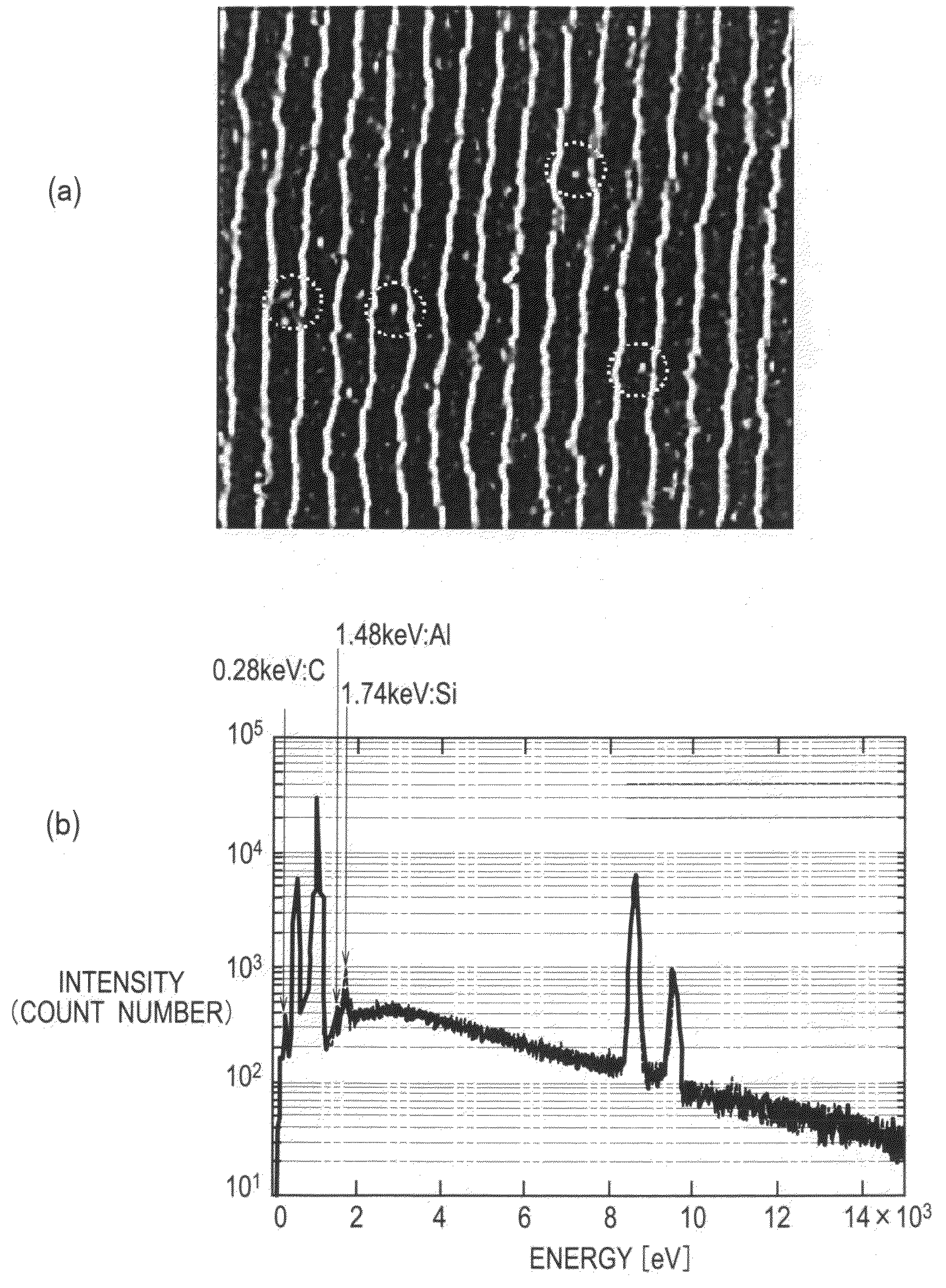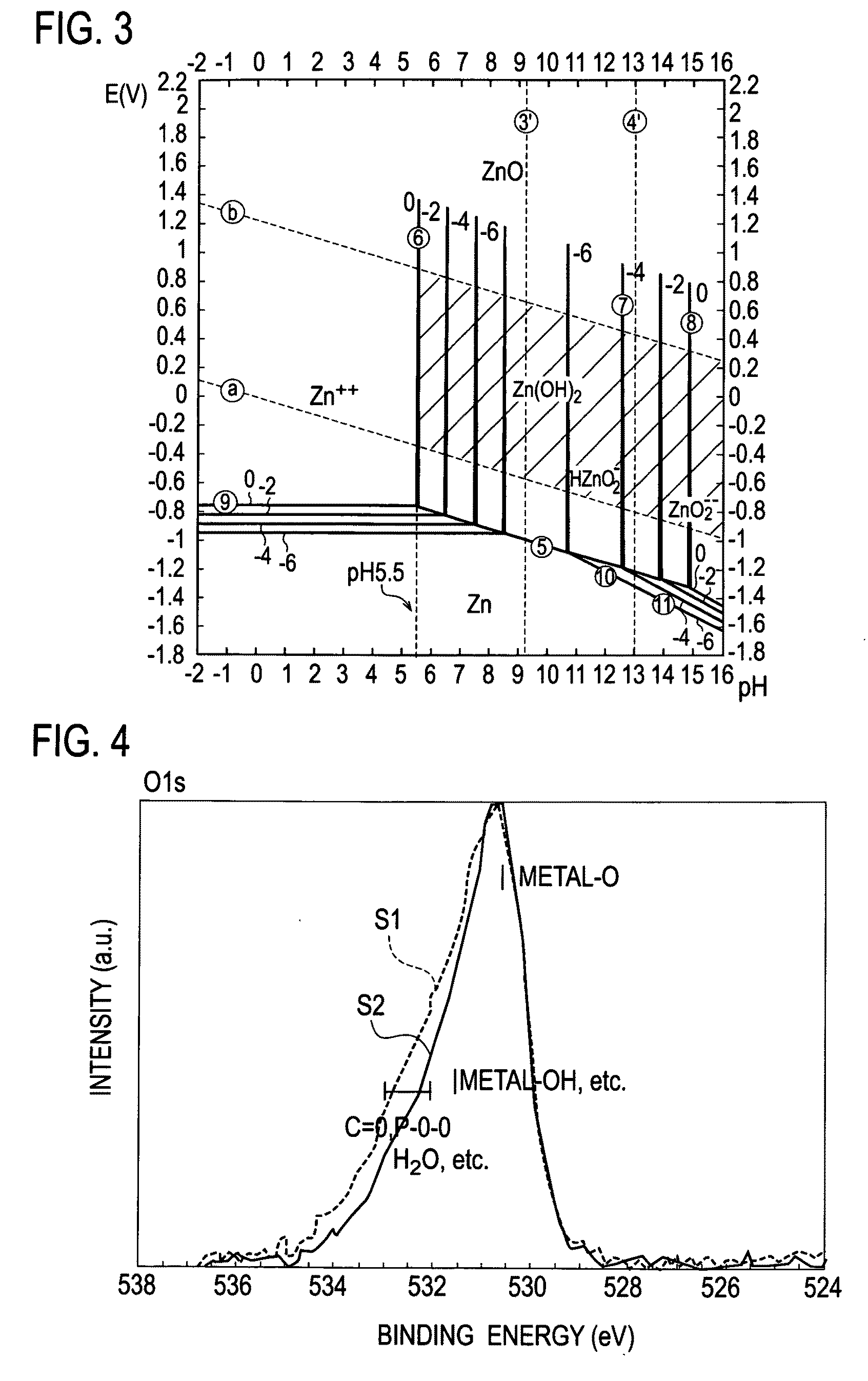ZnO-BASED SUBSTRATE AND METHOD OF TREATING ZnO-BASED SUBSTRATE
a technology of zno-based substrate and zno-based substrate, which is applied in the field of zno-based substrate and the treatment method of zno-based substrate, can solve the problems of inability to achieve device configurations to satisfy required functions, lack of breakdown voltage capability in a high electric field, and inability to operate in a high voltage field, so as to prevent the production of zn hydroxide, reduce the crystal defect density of any of these thin films
- Summary
- Abstract
- Description
- Claims
- Application Information
AI Technical Summary
Benefits of technology
Problems solved by technology
Method used
Image
Examples
example 1
[0061]First, the main surface of the ZnO substrate is subjected to polishing by using colloidal silica to obtain a surface having a stepped structure including one to two molecular layers. If there is a significant process damage at this stage, removal etching for a damaged layer is subsequently executed by using an acid having the pH equal to or below 1. Thereafter, Zn(OH)2 is removed by etching using an acid having the pH set in a range of 2±0.5.
example 2
[0062]First, the main surface of the ZnO substrate is subjected to polishing by using colloidal silica to obtain a surface having a stepped structure including one to two molecular layers. If there is a significant process damage at this stage, etching is executed by using an acid having the pH equal to or below 1 and then etching is executed by using an acid containing fluorine and having the pH set in a range of 3.5±1 to dissolve silica on the ZnO substrate. Finally, etching is executed by using an acid having the pH set in a range of 2±0.5.
example 3
[0063]First, the main surface of the ZnO substrate is subjected to polishing by using colloidal silica to obtain a surface having a stepped structure including one to two molecular layers. If there is not a significant process damage at this stage, etching is executed by using an acid having the pH equal to or below 3. A time period for this etching varies depending on the pH but it is necessary to spend at least 15 second or longer.
[0064]In any of the above-described examples, reduction of the OH groups is confirmed as shown in FIG. 4.
PUM
| Property | Measurement | Unit |
|---|---|---|
| pH | aaaaa | aaaaa |
| temperature | aaaaa | aaaaa |
| diameters | aaaaa | aaaaa |
Abstract
Description
Claims
Application Information
 Login to View More
Login to View More - R&D
- Intellectual Property
- Life Sciences
- Materials
- Tech Scout
- Unparalleled Data Quality
- Higher Quality Content
- 60% Fewer Hallucinations
Browse by: Latest US Patents, China's latest patents, Technical Efficacy Thesaurus, Application Domain, Technology Topic, Popular Technical Reports.
© 2025 PatSnap. All rights reserved.Legal|Privacy policy|Modern Slavery Act Transparency Statement|Sitemap|About US| Contact US: help@patsnap.com



